Abstract
A large number of chemicals may exert adverse effects on the central and/or peripheral nervous system. A commonly recommended strategy for neurotoxicity testing is that of a tiered approach aimed at identifying and characterizing the neurotoxicity of a compound. Guidelines exist in the United States and other countries that define the tests to be utilized in tier 1 testing. To address problems related to the increasing cost and time required for toxicity testing, the increasing number of chemicals being developed, and the concern of animal welfare activists, attention is currently being devoted to in vitro alternatives. This paper addresses the use of in vitro systems in neurotoxicology, and their potential role in a general strategy for neurotoxicity testing. The advantages and disadvantages of in vitro approaches for mechanistic studies and for screening of neurotoxicants are discussed. Suggestions for further validation studies are proposed.
Full text
PDF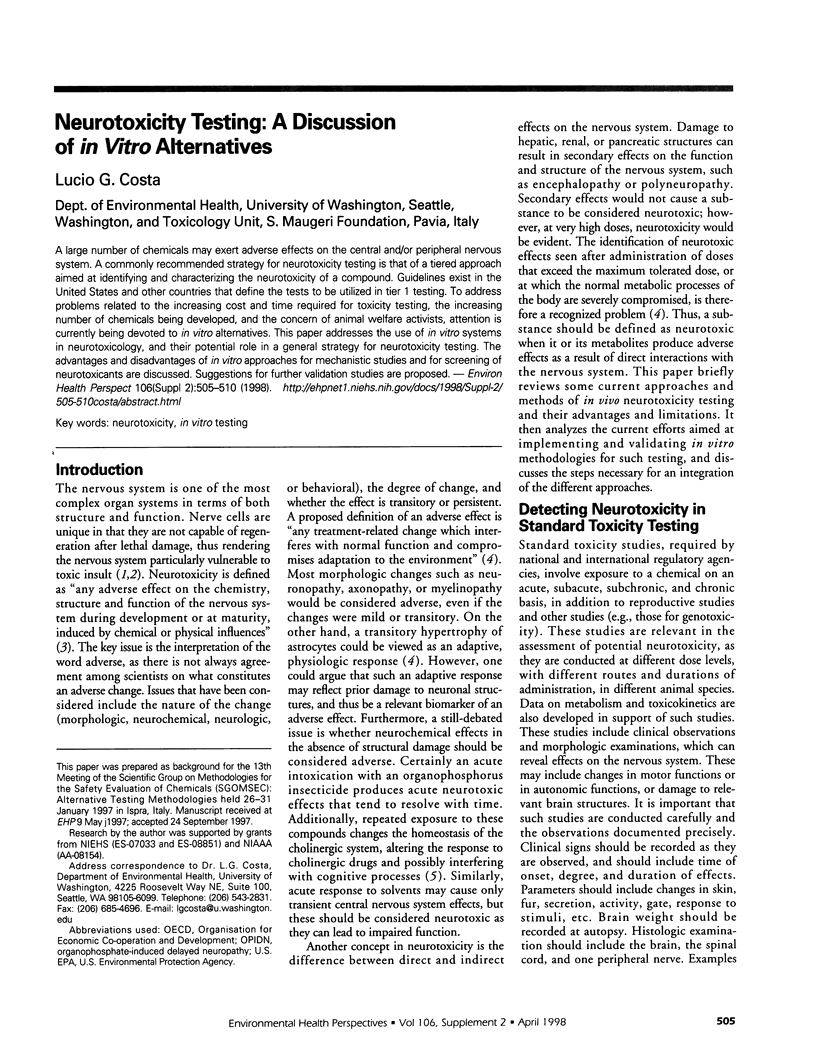
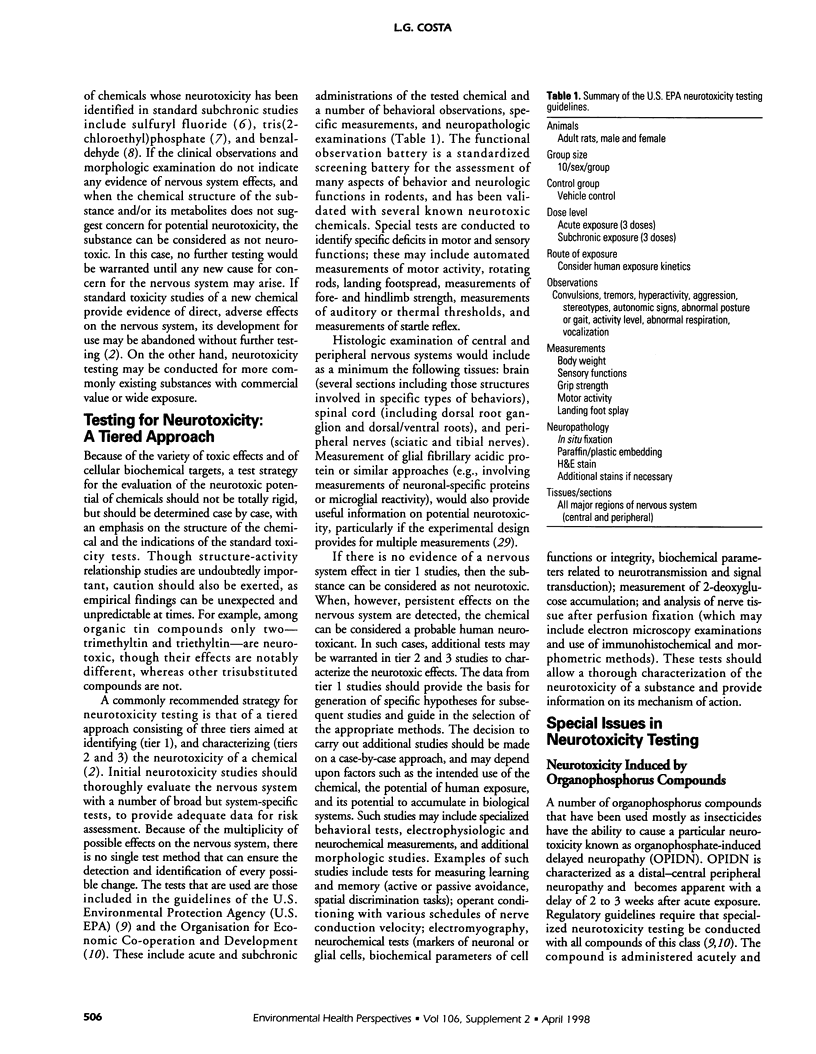
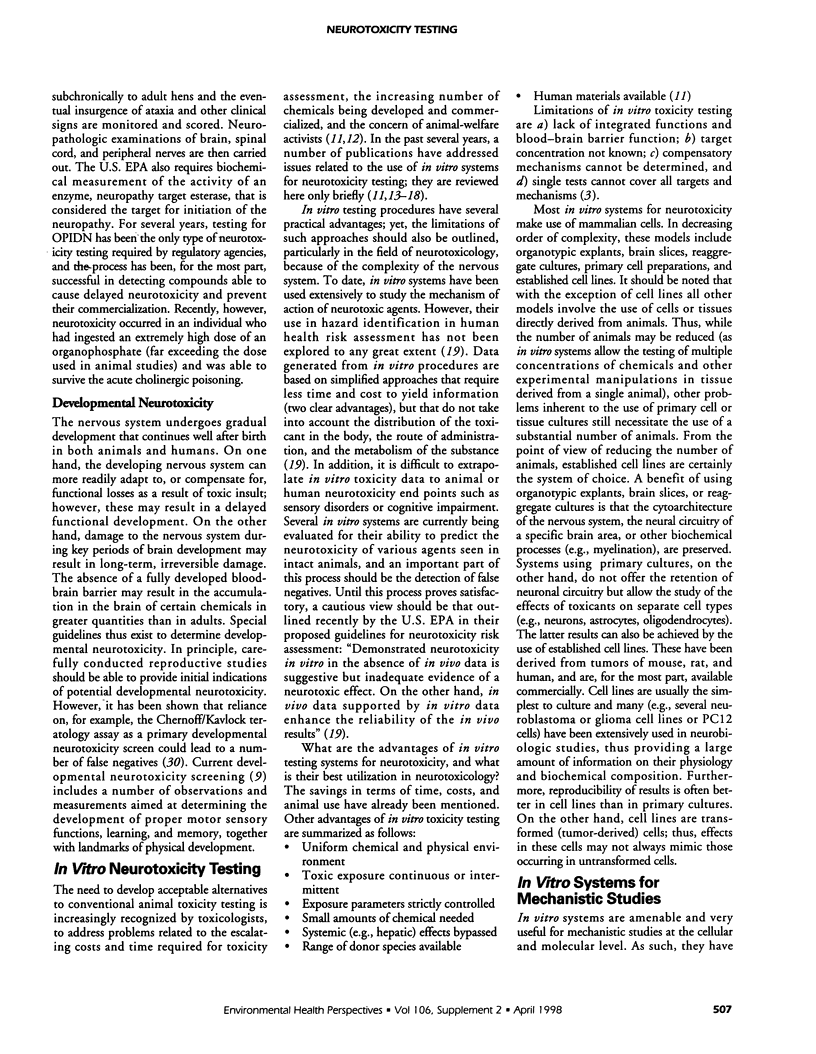
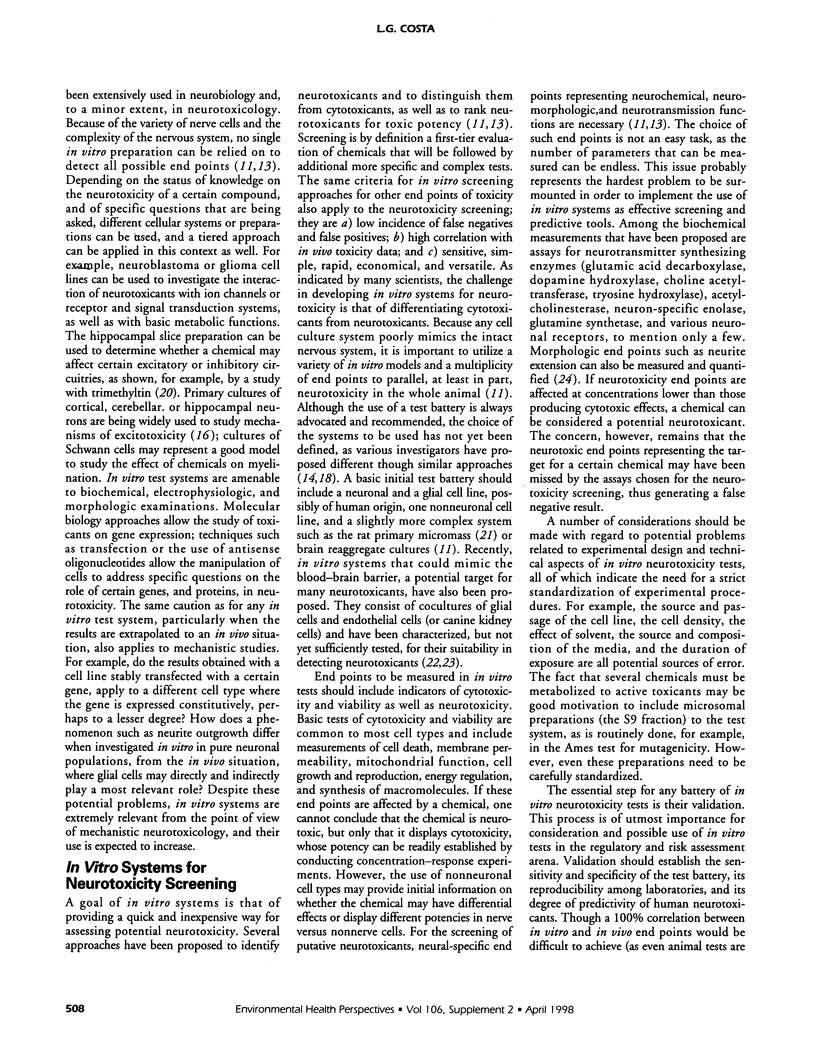
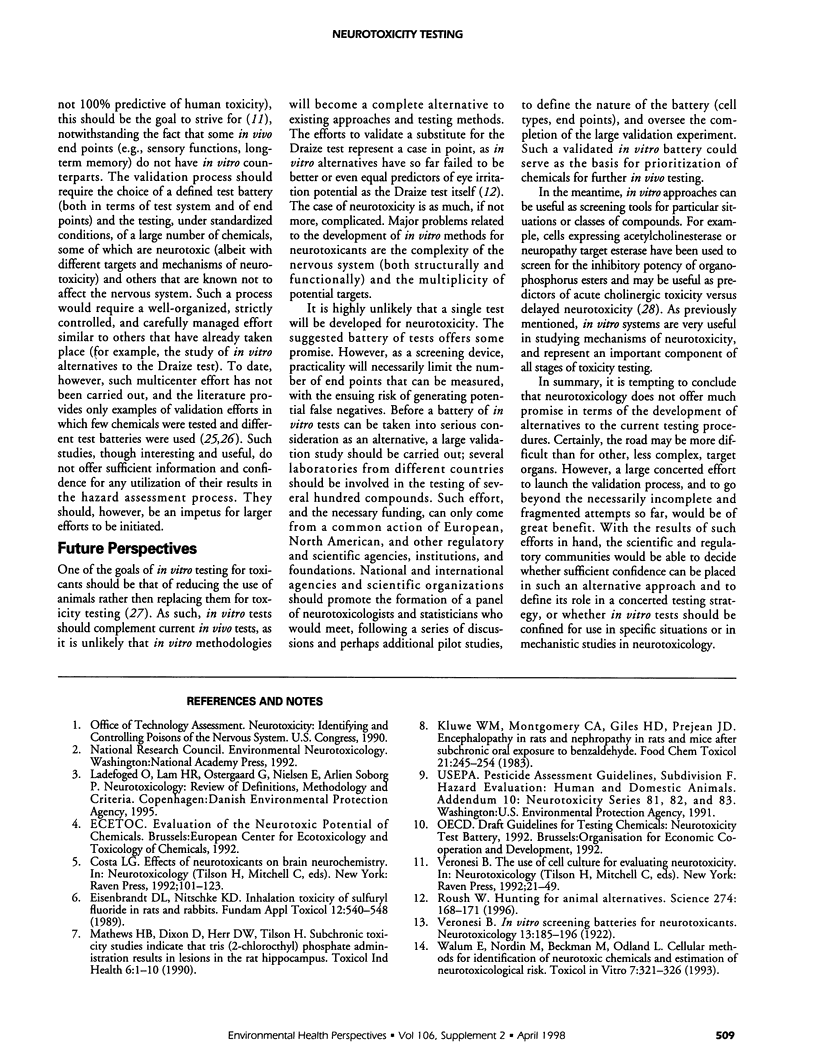
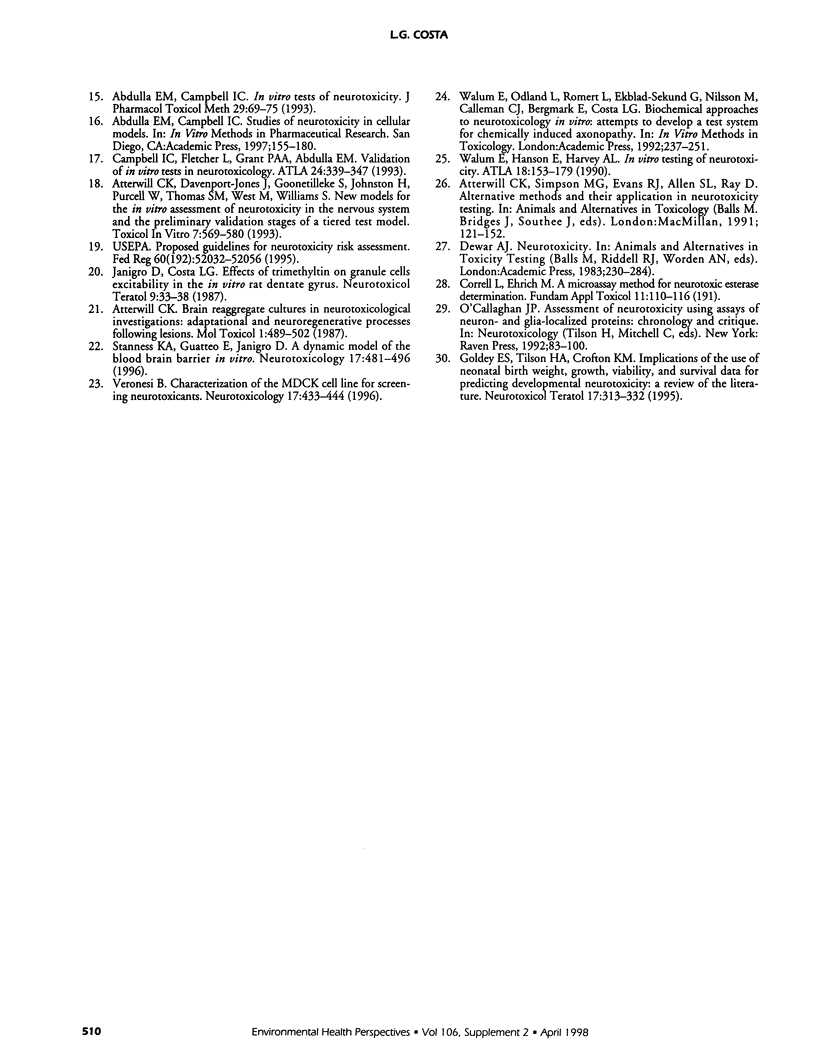
Selected References
These references are in PubMed. This may not be the complete list of references from this article.
- Abdulla E. M., Campbell I. C. In vitro tests of neurotoxicity. J Pharmacol Toxicol Methods. 1993 Apr;29(2):69–75. doi: 10.1016/1056-8719(93)90053-h. [DOI] [PubMed] [Google Scholar]
- Atterwill C. K. Brain reaggregate cultures in neurotoxicological investigations: adaptational and neuroregenerative processes following lesions. Mol Toxicol. 1987;1(4):489–502. [PubMed] [Google Scholar]
- Eisenbrandt D. L., Nitschke K. D. Inhalation toxicity of sulfuryl fluoride in rats and rabbits. Fundam Appl Toxicol. 1989 Apr;12(3):540–557. doi: 10.1016/0272-0590(89)90027-4. [DOI] [PubMed] [Google Scholar]
- Goldey E. S., Tilson H. A., Crofton K. M. Implications of the use of neonatal birth weight, growth, viability, and survival data for predicting developmental neurotoxicity: a survey of the literature. Neurotoxicol Teratol. 1995 May-Jun;17(3):313–332. doi: 10.1016/0892-0362(94)00073-m. [DOI] [PubMed] [Google Scholar]
- Janigro D., Costa L. G. Effects of trimethyltin on granule cells excitability in the in vitro rat dentate gyrus. Neurotoxicol Teratol. 1987 Jan-Feb;9(1):33–38. doi: 10.1016/0892-0362(87)90067-5. [DOI] [PubMed] [Google Scholar]
- Kluwe W. M., Montgomery C. A., Giles H. D., Prejean J. D. Encephalopathy in rats and nephropathy in rats and mice after subchronic oral exposure to benzaldehyde. Food Chem Toxicol. 1983 Jun;21(3):245–250. doi: 10.1016/0278-6915(83)90055-8. [DOI] [PubMed] [Google Scholar]
- Matthews H. B., Dixon D., Herr D. W., Tilson H. Subchronic toxicity studies indicate that tris(2-chloroethyl)phosphate administration results in lesions in the rat hippocampus. Toxicol Ind Health. 1990 Jan;6(1):1–15. doi: 10.1177/074823379000600101. [DOI] [PubMed] [Google Scholar]
- Roush W. Hunting for animal alternatives. Science. 1996 Oct 11;274(5285):168–171. doi: 10.1126/science.274.5285.168. [DOI] [PubMed] [Google Scholar]
- Stanness K. A., Guatteo E., Janigro D. A dynamic model of the blood-brain barrier "in vitro". Neurotoxicology. 1996 Summer;17(2):481–496. [PubMed] [Google Scholar]
- Veronesi B. Characterization of the MDCK cell line for screening neurotoxicants. Neurotoxicology. 1996 Summer;17(2):433–443. [PubMed] [Google Scholar]
- Veronesi B. In vitro screening batteries for neurotoxicants. Neurotoxicology. 1992 Spring;13(1):185–195. [PubMed] [Google Scholar]


